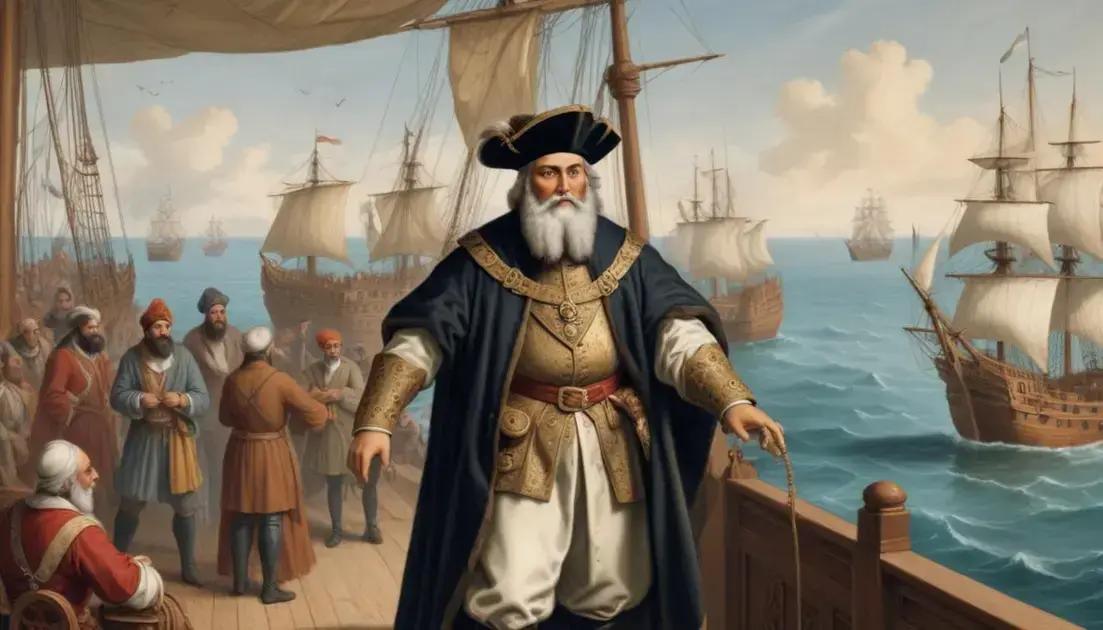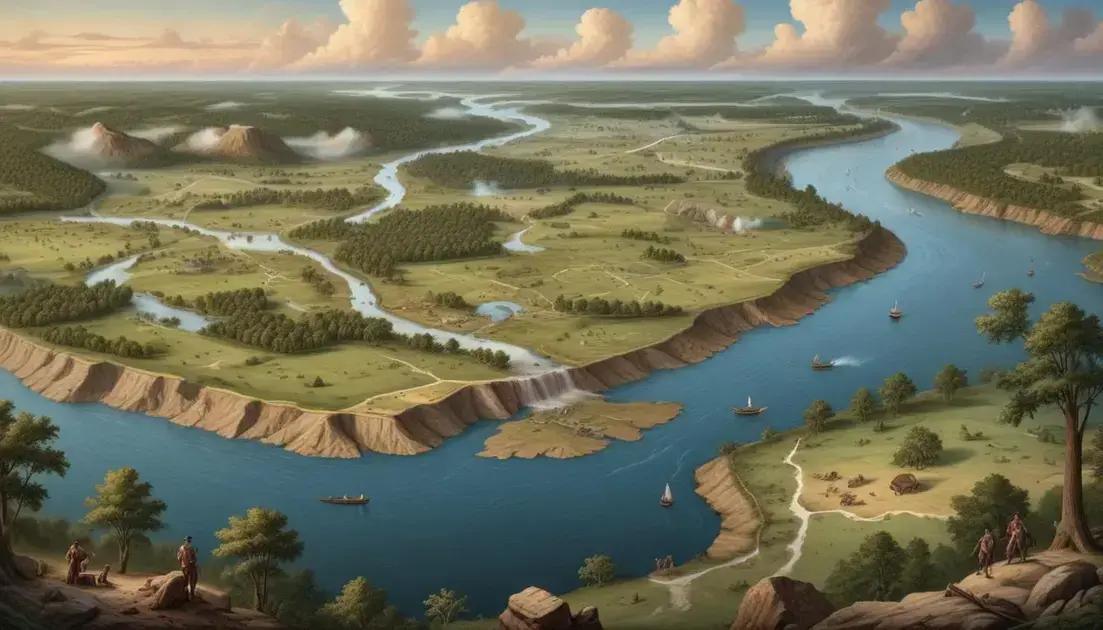
Vasco da Gama: The Maritime Route to India
Vasco da Gama was a pivotal explorer whose voyages to India in the late 15th century revolutionized trade between Europe and Asia. His journey established new trade routes, making spice trade more accessible and fostering cultural exchanges. The legacy of his expeditions shaped global commerce and inspired future generations of explorers to seek new lands. Today, his influence is evident in modern trade practices and educational discussions about exploration and cultural interactions.
Vasco da Gama was not just an explorer; he was a pivotal figure in connecting two worlds. His journey to India changed the course of history. Are you curious about how one voyage redefined trade?
Introduction to Vasco da Gama’s significance
Vasco da Gama was an explorer who opened new trade routes between Europe and Asia. His journey around Africa to India had a big impact. It changed how countries interacted through trade and cultural exchange.
The Early Life of Vasco da Gama
Vasco da Gama was born in Portugal around 1460. He came from a family of navigators and was trained in sailing and navigation. This background helped him when he set sail for India.
First Voyage to India
In 1497, Vasco da Gama set off on his first voyage. He left Lisbon with four ships and a clear goal: to find a sea route to India. After many challenges, he reached Calicut in 1498. This moment was crucial for trade.
Connecting Continents
His arrival in Calicut opened a direct trade link between Europe and Asia. Merchants could now exchange spices, textiles, and other goods more easily. This link changed economies and brought wealth to Portugal.
Long-term Effects
Vasco da Gama’s voyages led to European colonization in Asia. Countries competed for control over trade routes. This era of exploration also reshaped local cultures and economies around the world.
The historic voyage to India
The historic voyage to India by Vasco da Gama was a turning point. In 1497, he sailed from Lisbon with a mission to find a direct route to India. This journey was full of challenges and discoveries.
Setting Sail
Vasco da Gama’s fleet had four ships. They faced rough seas and unknown waters. The crew was nervous but excited about what lay ahead. They were on a mission to connect Europe with the spice-rich lands of India.
Key Stops Along the Way
During the voyage, Vasco made important stops. First, they reached the Canary Islands. Then they sailed to the coast of Africa. Each stop helped them resupply and adjust their course. These stops were vital for their success.
Reaching India
After many months at sea, Vasco and his crew reached Calicut in May 1498. This was a momentous occasion. They were the first Europeans to arrive by sea. The locals were curious and welcomed them.
Impact of the Voyage
This voyage opened a new trade route. It allowed Europe to access spices like pepper and cinnamon directly. It changed global trade patterns forever. Vasco’s efforts marked the beginning of a new era in exploration and commerce.
Impact on European and Asian trade relations
The impact of Vasco da Gama’s voyage on European and Asian trade relations was huge. Before his journey, trade routes were long and complicated. Merchants faced many challenges. Vasco’s discoveries made it easier to trade directly.
New Routes for Trade
His arrival in India opened new sea routes. This made it quicker for Europeans to get spices and other goods. Spices like pepper and cinnamon became very popular in Europe. This demand changed the way people thought about trade.
Boosting Wealth in Europe
With direct access to valuable goods, European countries began to grow richer. Portugal, in particular, benefited from this new trade. The wealth helped fund more explorations and trade missions.
Cultural Exchanges
The connection between Europe and Asia also allowed cultural exchanges. Ideas, art, and technology flowed both ways. Europeans learned about Asian customs. Meanwhile, spices and textiles made their way into European homes.
Competition Among Countries
Other European countries soon joined the race. England, France, and the Netherlands sought their own routes. This led to fierce competition. Countries wanted to control the most profitable trade routes.
Long-lasting Effects
The changes started by Vasco da Gama’s voyage created lasting effects. Trade patterns shifted forever. This new connection between Europe and Asia continues to impact global trade today.
Legacy of Vasco da Gama in modern times
The legacy of Vasco da Gama is notable even today. His voyages helped shape global trade and exploration. They opened the door for new connections between different cultures.
Influence on Global Trade
Because of Vasco’s discoveries, trade routes expanded dramatically. Countries began to establish trading posts around the world. This not only increased commerce but also connected continents more than ever.
Cultural Exchange and Understanding
Vasco’s journeys led to significant cultural exchanges. Ideas, art, and traditions moved between Europe and Asia. This exchange has shaped modern societies and how people view each other today.
Promotion of Navigation and Exploration
His successful voyages inspired many explorers after him. They wanted to discover new lands and trade routes. This spirit of exploration led to more discoveries and a better understanding of the world.
Importance in Education
Today, Vasco da Gama is studied in schools around the world. His journeys are important lessons in courage, strategy, and the spirit of discovery. His story continues to be relevant for students and historians alike.
Modern Trade and Economics
The principles of trade Vasco da Gama set in motion still apply today. The concept of global trade networks began with his voyages. Modern economies continue to thrive on these early ideas.
Conclusion: The lasting influence of Vasco da Gama
The lasting influence of Vasco da Gama can still be felt today. His journeys changed the way we view the world. He opened new paths for trade and exploration.
Shaping Trade Relations
Vasco da Gama’s connection between Europe and Asia shaped global trade. Spices became key products. This connection laid the groundwork for a global marketplace.
Encouraging Future Explorers
His voyages inspired many to explore unknown lands. Following his journey, explorers set out to discover new territories. This spirit of adventure has continued through the ages.
Cultural Exchange and Learning
His travels also promoted cultural exchange. Different customs and ideas moved between countries. This sharing enriched societies on both sides.
Education and Legacy
Today, students learn about Vasco da Gama in schools. His life teaches about courage and curiosity. His legacy continues to inspire generations.
Conclusion
In conclusion, Vasco da Gama’s journeys changed the world in many ways. His voyages opened new trade routes and connected different cultures. This not only helped economies grow but also encouraged a spirit of exploration.
Today, we see his influence in global trade and cultural exchanges. The lessons we learn from his life show us the importance of curiosity and courage. By studying Vasco da Gama, we understand how one person’s journey can shape history. His legacy continues to inspire future generations of explorers and thinkers, reminding us that discovery is still important today.


